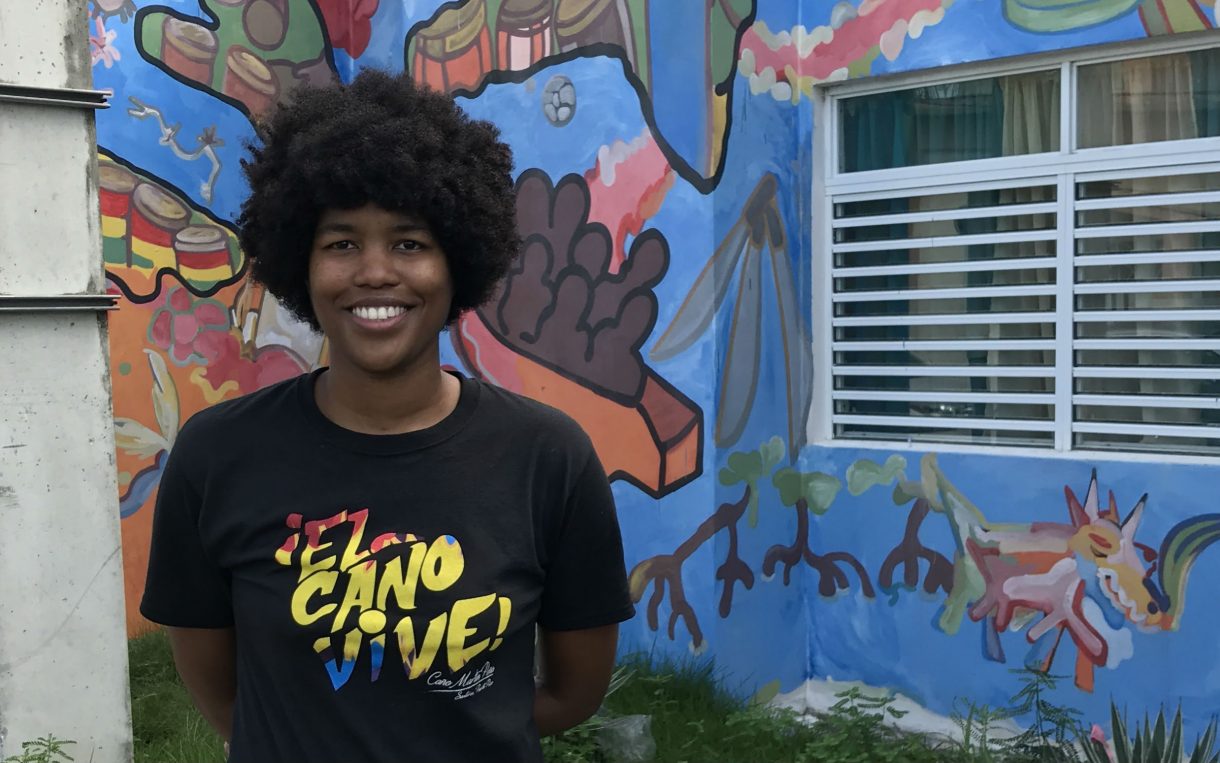Without electricity or the internet, how can Puerto Ricans get FEMA help-by a looming deadline?
 Lawyer Estrella Santiago Perez works for ENLACE, an organization that is helping Puerto Ricans fill out their FEMA forms. Photo: Sam Nurick/Oxfam
Lawyer Estrella Santiago Perez works for ENLACE, an organization that is helping Puerto Ricans fill out their FEMA forms. Photo: Sam Nurick/Oxfam
ENLACE, a local organization working in eight communities around San Juan, has set up shop with a team of lawyers and volunteers to help families apply for assistance to repair their hurricane-damaged homes.
Samantha Nurick is a humanitarian press officer at Oxfam.
Anyone who’s had the experience of filling out a tedious government form knows how frustrating and seemingly endless the process can be. Now imagine having the roof blown off your house, spending every night in darkness after a month without power, and relying on water bottles every day so you have something to drink–and your best hope for fixing all of this is filling out a government form. This is the situation for countless Puerto Ricans right now, including those I met at a community center in San Juan’s Buena Vista neighborhood–one of the parts of the city with the lowest average income, and one that was hit hard by Hurricane Maria.
FEMA, the Federal Emergency Management Agency, gives people 60 days after a disaster to fill out forms that will help them get emergency assistance for their damaged homes, but they must be completed online or by phone. By government records, which some have claimed are inflated, only 17 percent of Puerto Ricans have power. So not only are Puerto Ricans having to fill out an extensive form, but they have a tight timeline, and often don’t have access to the internet or working phones to complete the task. FEMA has the authority to extend this deadline, and Oxfam is encouraging the current administration to take this important step to ensure all Puerto Ricans can receive the assistance they deserve as American citizens.
I visited a center where the local organization ENLACE G8, which supports eight communities surrounding the Martin Pena Channel, known as “el cano,”–was coordinating lawyers to help people fill out these FEMA forms. The center has WiFi, volunteers who can help people understand the requirements of the forms, and lawyers who can help with any legal issues.
There I met Daisy Ruperto Padilla, who lives in the neighborhood a few blocks away known as Israel. The storm tore off the roof of her two-story home. She tried to save everything from upstairs, but the wind and rain got in. As she recalled what’s happened since the hurricane, she brushed back a tear, and told me she’s lost everything.
Ruperto Padilla already filled out a FEMA form, but hadn’t heard anything back because she’s been living with her sister in Caguas, which used to be a quick trip from San Juan, but can now take two hours by car. Nor does she have a working phone number. She needs FEMA to come inspect her home so it can provide support to repair the damage and let her move back in. Many Puerto Ricans are living with other family members, but despite the kindness of their relatives, they can’t stay forever.
To make things even more complicated, Ruperto Padilla doesn’t have proof of ownership of her home. She inherited it from her mother, but under Puerto Rican law, houses are split evenly among all of a parent’s children, so she needs an affidavit from a notary to prove the house is hers. Otherwise, FEMA won’t give her the help she needs to repair it. She tried to keep a smile on her face and thanked everyone at the center who helped, but after her long drive, was anxious to resolve the issue.
Since the hurricane, ENLACE has been running clinics like this one in two locations across the eight Martin Pena Channel communities. In just a few days, its lawyers and volunteers have helped more than 200 families fill out the FEMA forms, and provided many more like Ruperto Padilla with additional legal support.
Estrella Santiago Perez was the lawyer leading the day’s effort. She’s lived in many different communities across San Juan, and first found out about ENLACE while in law school. She fell in love with its efforts to empower communities through critical thinking activities and helping them cultivate new leaders, especially among youths. She applied for a job immediately after graduation and kept coming back until ENLACE was able to hire her.
Since the hurricane, Santiago Perez has been at most of these clinics, coordinating volunteers and talking with community members–whether grateful, scared, angry, or just overwhelmed. It was tough to find a few minutes to speak with her as she kept getting pulled away to manage different things, but she handled it all calmly and happily. She’s glad to be making sure Puerto Ricans get the government assistance they need.
Puerto Rico faces many challenges, from the slow supply of emergency assistance to outdated infrastructure that will take a long time to repair, but everyone I met at the center was incredibly kind to me and to each other. People like Ruperto Padilla and Santiago Perez are working hard to build the island back better. As Santiago Perez ’s shirt read “the channel lives,” and so does Puerto Rico.